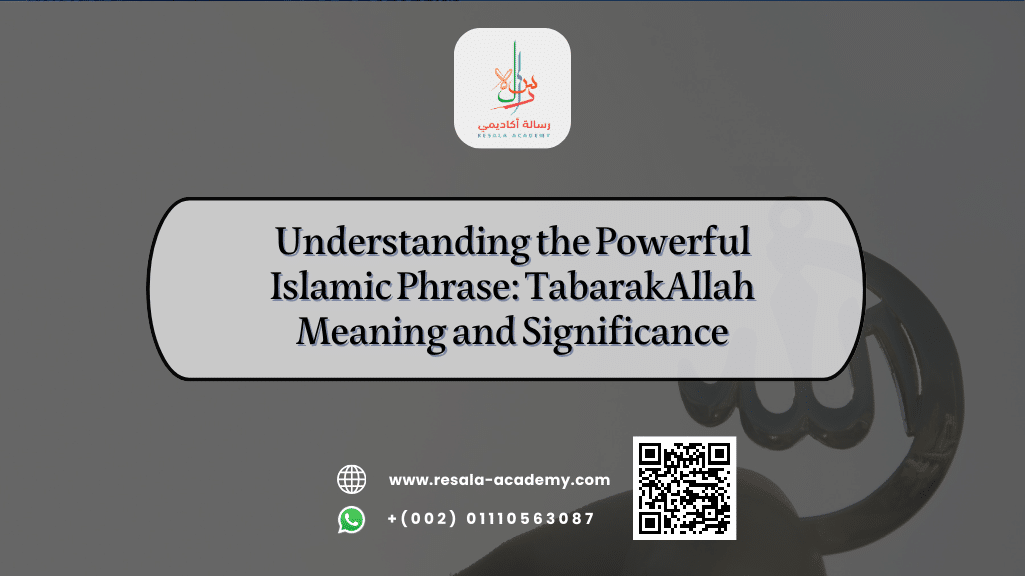Table of Contents
Top 20 Arabic Sentences with English Translation for Quick Learning
Learning a new language can be a thrilling journey, especially when it opens the door to a rich culture like that of the Arab world. Whether you’re planning to travel, engage in business, or simply want to connect with Arabic-speaking friends, mastering essential Arabic sentences is the fastest way to start communicating effectively.
In this article, we’ll explore the top 20 commonly used Arabic phrases with English translations that are perfect for beginners. These expressions will help you build a strong foundation in Modern Standard Arabic and boost your confidence in real-life conversations.
If you’re serious about learning Arabic, this guide is your stepping stone. Plus, we’ll introduce you to Resala Academy, a trusted online platform offering Arabic classes for non-native speakers.
Why Learn Basic Arabic Sentences?
Arabic is one of the most widely spoken languages in the world, with over 400 million speakers across more than 20 countries.
Learning basic Arabic sentences not only helps in day-to-day communication but also enhances your understanding of Arab culture and traditions. Here’s why learning essential phrases is important:
- It accelerates your speaking ability.
- It builds your vocabulary naturally.
- It helps you understand grammar in context.
- It boosts your confidence in real-life interactions.
Top 20 Arabic Sentences with English Translation
Below is a curated list of the most useful Arabic sentences for beginners. Each phrase is presented in Arabic, followed by its English translation and pronunciation tips.
1. السلام عليكم
Translation: Peace be upon you
Pronunciation: As-salāmu ʿalaykum
Use: A common greeting in Arab countries.
2. كيف حالك؟
Translation: How are you?
Pronunciation: Kayfa ḥāluka (to a male) / Kayfa ḥāluki (to a female)
Use: To ask someone how they are doing.
3. أنا بخير، شكراً
Translation: I’m fine, thank you
Pronunciation: Ana bikhayr, shukran
Use: A polite response to “How are you?”
4. ما اسمك؟
Translation: What is your name?
Pronunciation: Mā ismuka (to a male) / Mā ismuki (to a female)
Use: To ask someone’s name.
5. اسمي محمد
Translation: My name is Muhammad
Pronunciation: Ismī Muḥammad
Use: To introduce yourself.
6. من أين أنت؟
Translation: Where are you from?
Pronunciation: Min ayna anta (to a male) / Min ayna anti (to a female)
Use: To ask about someone’s origin.
7. أنا من أمريكا
Translation: I am from America
Pronunciation: Ana min Amrīkā
Use: To state your nationality.
8. هل تتكلم الإنجليزية؟
Translation: Do you speak Arabic?
Pronunciation: Hal tatakallam al-arabīa?
Use: To find out if someone speaks Arabic.
9. نعم، قليلاً
Translation: Yes, a little
Pronunciation: Naʿam, qalīlan
Use: To say you speak a little Arabic or English.
10. لا أفهم
Translation: I don’t understand
Pronunciation: Lā afham
Use: To express confusion or lack of understanding.
11. من فضلك
Translation: Please
Pronunciation: Min faḍlik
Use: To make polite requests.
12. شكراً جزيلاً
Translation: Thank you very much
Pronunciation: Shukran jazīlan
Use: To express deep gratitude.
13. على الرحب والسعة
Translation: You’re welcome
Pronunciation: ʿAla ar-raḥb wa as-siʿah
Use: A polite response to “thank you.”
14. كم السعر؟
Translation: How much is it?
Pronunciation: Kam as-siʿr?
Use: Useful while shopping.
15. أين الحمام؟
Translation: Where is the bathroom?
Pronunciation: Ayna al-ḥammām?
Use: A must-know for travelers.
16. أحتاج إلى مساعدة
Translation: I need help
Pronunciation: Aḥtāju ilā musāʿadah
Use: To ask for assistance.
17. أنا لا أتكلم العربية
Translation: I don’t speak Arabic
Pronunciation: Ana lā atakallam al-ʿarabiyyah
Use: To let others know your language limitations.
18. هل يمكنك مساعدتي؟
Translation: Can you help me?
Pronunciation: Hal yumkinuka musāʿadatī?
Use: To request help politely.
19. أنا أتعلم العربية
Translation: I am learning Arabic
Pronunciation: Ana ataʿallam al-ʿarabiyyah
Use: To express your interest in learning.
20. إلى اللقاء
Translation: Goodbye
Pronunciation: Ilā al-liqāʾ
Use: A formal way to say goodbye.
Mastering the Art of Constructing Arabic Sentences
Understanding how to form and structure Arabic sentences is essential for anyone aiming to communicate effectively in Arabic.
Whether you’re a complete beginner or brushing up your skills, learning the mechanics behind sentence construction will empower you to express yourself with clarity and confidence. Here’s a breakdown of how to make sentences in Arabic, tailored for non-native speakers.
Understand the Sentence Structure (الجملة)
Arabic follows a flexible sentence structure, but the two main types are:- Nominal Sentences (جملة اسمية): Begin with a noun or pronoun.
Example: الطالب مجتهد (The student is hardworking). - Verbal Sentences (جملة فعلية): Begin with a verb.
Example: ذهب الولد إلى المدرسة (The boy went to school).
- Nominal Sentences (جملة اسمية): Begin with a noun or pronoun.
Subject-Verb-Object Order
In verbal sentences, Arabic typically follows a Verb-Subject-Object (VSO) order, unlike English’s Subject-Verb-Object (SVO).
Example: كتب المعلم الدرس (The teacher wrote the lesson).Use of Definite Articles
Arabic uses the definite article “ال” (al-) to indicate specificity.
Example: الكتاب على الطاولة (The book is on the table).Gender and Number Agreement
Arabic nouns and verbs must agree in gender (masculine/feminine) and number (singular/dual/plural).
Example: الفتيات يكتبن الرسائل (The girls write the letters).Incorporate Useful Vocabulary
Start with high-frequency words to build meaningful Arabic sentences.
Example: أحب القهوة (I love coffee).Practice Sentence Formation with Real-Life Scenarios
Create sentences based on daily activities to reinforce learning.
Example: أذهب إلى السوق كل صباح (I go to the market every morning).Use Online Resources and Tutors
Platforms like Resala Academy offer structured lessons on how to make sentences in Arabic, guided by native-speaking instructors.
How to Read, Write, and Say Arabic Sentences with Confidence
Learning how to read, write, and pronounce Arabic sentences is a multi-layered process that requires consistent practice and the right techniques. Below are expert tips to help you master each skill effectively.
How to Read Arabic Sentences?
- Start with short vowelled texts (with harakat) to understand pronunciation.
- Read from right to left, as Arabic is a Semitic language.
- Practice with children’s books or beginner-level readers to build fluency.
- Use tools like Quranic Arabic readers to improve comprehension.
How to Say “Sentence” in Arabic
- The word for sentence in Arabic is “جملة” (jumla).
- Example: كيف أقول هذه الجملة؟? (How do I say this sentence?)
How to Write Arabic Sentences?
- Begin by learning the Arabic alphabet and how letters connect.
- Practice writing basic nominal and verbal sentences.
- Use lined Arabic writing notebooks to maintain proper letter alignment.
- Write about your daily routine in Arabic to enhance fluency.
Example: أستيقظ في الساعة السابعة صباحاً (I wake up at 7 AM).
Use Transliteration Wisely
- While learning, use transliteration to bridge understanding, but gradually shift to Arabic script.
- Example: Ana uḥibbu al-lugha al-ʿarabiyyah (I love the Arabic language).
Listen and Repeat
- Use audio resources to mimic native pronunciation.
- Platforms like Resala Academy provide audio-visual aids to help you master pronunciation.
Join Arabic Writing Workshops
- Participate in writing-focused classes to get feedback on your sentence construction.
- Learn how to express emotions, opinions, and ideas through structured writing exercises.
Use Flashcards and Sentence Builders
- Create flashcards with full Arabic sentences and their English translations.
- Use sentence-building apps to test your knowledge in real-time.
Engage in Language Exchange
- Partner with a native speaker to practice speaking and writing.
- Try forming sentences based on topics like food, travel, or hobbies.
By consistently applying these methods, you’ll not only learn how to read and write Arabic sentences, but also gain the confidence to speak them fluently. And with expert guidance from Resala Academy, your journey to mastering Arabic becomes structured, interactive, and highly rewarding.
How to Use These Arabic Sentences Effectively
To make the most of these expressions, follow these tips:
- Practice daily: Repetition is key to language retention.
- Use flashcards: Visual aids help reinforce memory.
- Listen and repeat: Use audio tools to perfect pronunciation.
- Engage in conversation: Practice with native speakers or tutors.
- Join an online course: Structured learning accelerates progress.
Learn Arabic Online with Resala Academy
If you’re ready to take your Arabic learning to the next level, Resala Academy is your ultimate destination. Specializing in Arabic classes for non-native speakers, Resala Academy’s Online Arabic Course offers:
✅ Live, interactive classes with native Arabic instructors
✅ Flexible schedules tailored to your availability
✅ Courses for all levels: Beginner to Advanced
✅ Quranic Arabic, Modern Standard Arabic, and Dialect options
✅ One-on-one sessions and group classes
Whether you’re learning Arabic for travel, work, or religious studies, Resala Academy provides a supportive and immersive environment to help you succeed.
👉 Join thousands of students worldwide who are mastering Arabic with Resala Academy. Start your free trial today!
Frequently Asked Questions (FAQs)
1. What is the best way to learn Arabic sentences quickly?
The most effective way is through daily practice, repetition, and structured lessons. Enrolling in an online course like Resala Academy offers guided learning with expert instructors to help you master Arabic sentences efficiently.
2. Are these Arabic sentences in Modern Standard Arabic?
Yes, all the phrases listed are in Modern Standard Arabic (MSA), which is widely understood across the Arab world and used in formal settings, media, and education.
3. Can I learn Arabic without knowing the script?
While it’s possible to learn spoken Arabic using transliterations, learning the Arabic script is highly recommended for reading, writing, and full comprehension. Resala Academy offers beginner-friendly lessons that include script learning.
4. How long does it take to become fluent in Arabic?
Fluency depends on your learning pace, consistency, and exposure. With regular practice and a structured program like that of Resala Academy, you can achieve conversational fluency in 6–12 months.
5. Is Arabic hard to learn for English speakers?
Arabic has a different script and grammar system, which may seem challenging at first. However, with the right resources and consistent practice, especially through platforms like Resala Academy, it becomes manageable and rewarding.
Conclusion
Mastering essential Arabic sentences is the first step toward fluency and cultural immersion. With just 20 powerful phrases, you can start speaking Arabic confidently and connect with millions of people across the Arab world. Whether you’re traveling, studying, or exploring a new culture, these expressions will serve as your linguistic passport.
And remember, the journey becomes easier and more enjoyable with the right support. Resala Academy is here to guide you every step of the way with expert-led Arabic classes tailored for non-native speakers.
Ready to Speak Arabic with Confidence?
Don’t just memorize words—start speaking Arabic today with the help of professional instructors at Resala Academy. Whether you’re a complete beginner or looking to enhance your skills, Resala Academy has the perfect course for you.
By incorporating these Arabic sentences into your daily routine and leveraging the resources at Resala Academy, you’ll be well on your way to mastering one of the world’s most beautiful and expressive languages.
🔗 Click here to enroll now and start your Arabic journey. Happy learning!




